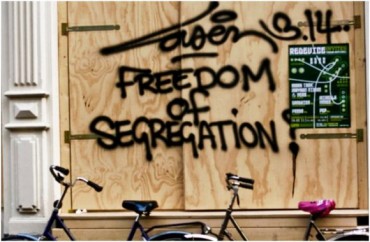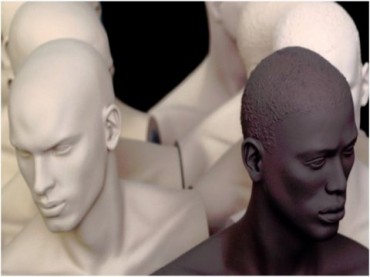
The University of Connecticut has been on the receiving end of growing criticism over its plans for a wing dedicated to housing black males inside a new dorm building.
It’s billed as a living-learning community for black students, some sort of safe space, with campus officials suggesting such an arrangement will help them get through college.
But the plans have prompted a complaint to the U.S. Department of Education’s Office of Civil Rights to test their legality, Education Dive reports.
U.S. Commission on Civil Rights members Gail Heriot and Peter Kirsanow, who lodged the complaint, argue the plans are “heading in the wrong direction,” promoting the “ghettoization” of black males on campus, according to the article.
Kirsanow called the plan an olive branch from administrators to black students over racial tensions, adding “college administrators, not all of them, but there are those that find it easier to capitulate to the demands of 18- and 19-year-olds than to stand for the principles of Western civilization … and do the right thing,” he told Education Dive, adding the right thing is to break students from comfort zones and push cross-cultural understandings.
In a column for the Journal Inquirer, Michael Meyers, executive director of the New York Civil Rights Coalition, called the plan “Orwellian.”
“UConn aims to present its stereotyping about black male students as benevolent and beneficial. This is reminiscent of the warning about ‘benevolent racism’ given by my mentor, Dr. Kenneth B. Clark, the psychologist whose work the U.S. Supreme Court cited in 1954 to strike down segregated public schools,” Meyers wrote.
“Clark warned that white racism would have gained its greatest triumph had it been able, back then, ‘to persuade its black victims that segregation was not only acceptable but desirable in itself, and that the justification for this separatism was color alone,'” he continued. “As late as 1969 Clark resigned from the board of trustees of Antioch College over that college’s all-black dorm, before the federal government finally stepped in to declare it illegal.”
RELATED: Black students demand segregated spaces from white students
But UConn administrators emphasize the new dorm building will house students from all races, with black males only taking up portion of one floor. Moreover, officials point out it’s one of nearly 20 voluntary learning groups categorized by topics such as culture and majors.
 “At many predominantly white institutions nationwide, elements of African-American culture are harder to find, which can make some students experience a sense of detachment from their universities,” according to Stephanie Reitz, a UConn spokesperson, in an email to The College Fix.
“At many predominantly white institutions nationwide, elements of African-American culture are harder to find, which can make some students experience a sense of detachment from their universities,” according to Stephanie Reitz, a UConn spokesperson, in an email to The College Fix.
“We know our African-American males have the skills and knowledge to excel, and this initiative builds on that by engaging their potential with programs and services that better help them incorporate into the daily grind of college,” she said.
The dorm wing, expected to open this fall, is called the ScHOLA2RS House initiative. It stands for Scholastic House of Leaders who are African American Researchers and Scholars.
“ScHOLA²RS House is a Learning Community designed to support the scholastic efforts of male students who identify as African American/Black through academic and social/emotional support, access to research opportunities, and professional development,” its website states.
“Education takes place on both sides of the classroom door, and part of ensuring students’ success at UConn includes providing them with a living experience that they find to be enjoyable, supportive and inspiring,” Reitz told The Fix. “It’s also critical to retaining students so they want to return to UConn each year and complete their degrees.”
“Not only are these students least represented on campus, but they also have the lowest retention and graduation rates,” she said.
But the News Times reports that “critics said if UConn is trying to improve the low 55 percent graduation rate for black men — compared to the 83 percent graduation rate for all students — the solution should promote integration, not segregation.”
“It’s troublesome to me, and it’s troublesome to all of us who have fought to eliminate the barriers to equal opportunities in public,” Samuel Hyman, a former member of the Commission on Human Rights and Opportunities, told the News Times. “It’s difficult to understand how I better myself through isolation.”
Like The College Fix on Facebook / Follow us on Twitter
IMAGES: Flickr






Please join the conversation about our stories on Facebook, Twitter, Instagram, Reddit, MeWe, Rumble, Gab, Minds and Gettr.